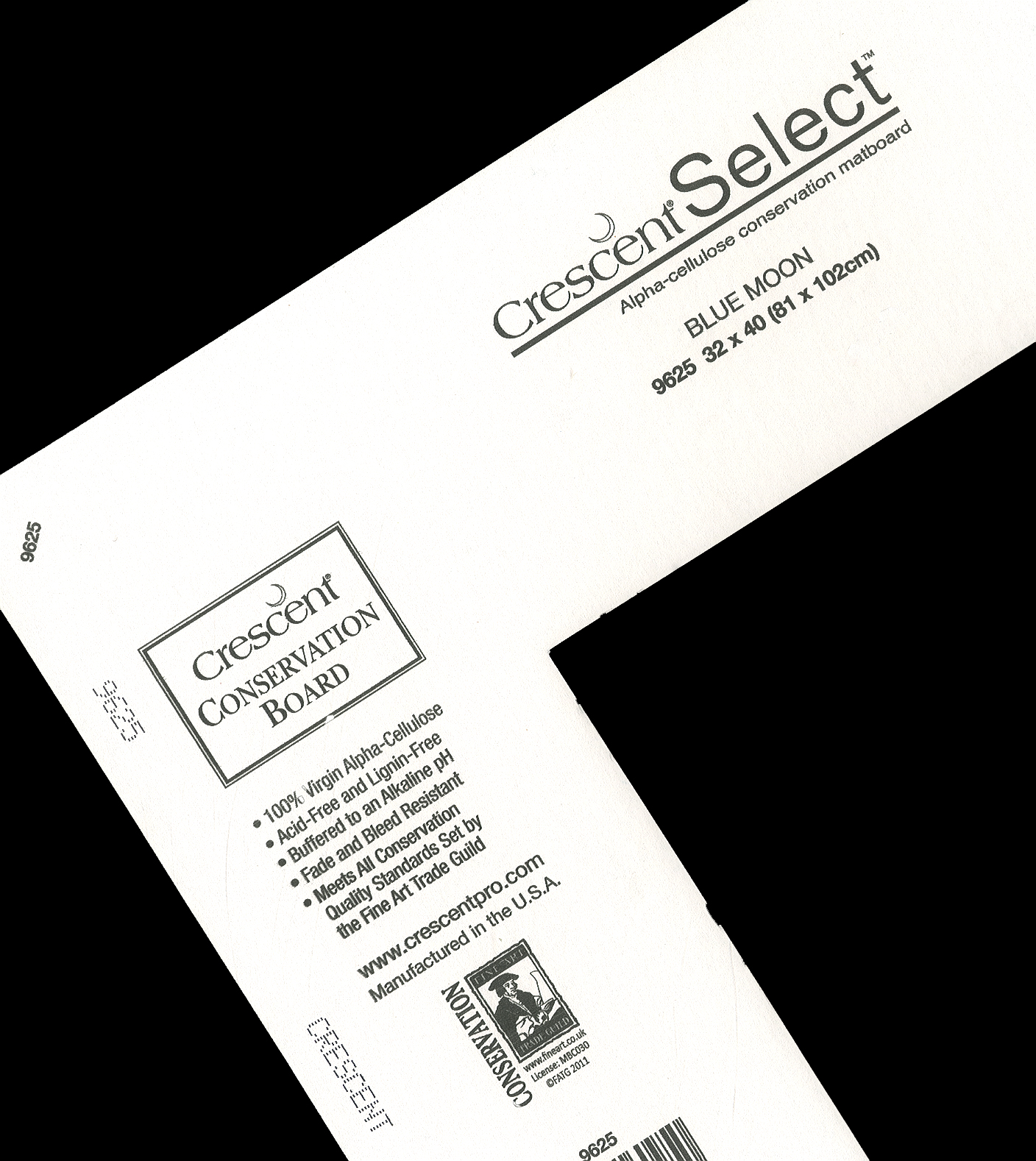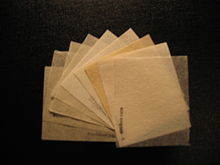ColorWorks Custom Lab
Fine Art Reproduction & Framing
(907) 474-0002
When it comes to choosing materials to frame your artwork, you will undoubtedly be bombarded with a lot of "buzz" words like acid-free, archival, and conservation grade. Let's talk briefly about what some of these terms mean, and more importantly what they mean to your artwork. While I hope you choose ColorWorks as your framer, I think it important to note that if the company or framer you ultimately do choose will not disclose the specific type of mat board and other materials they are using, I would be concerned. When in doubt, ask. Your framer should be proud of the materials they use, and happy to share this information with you.
The most common type of matboard is simply called decorative or regular mat board. These types of matboards are made from wood pulp, and wood by its nature is acidic. What the manufacturer does is to add a buffering agent, (typically calcium carbonate) to neutralize the acid, and actually make the matboards slightly alkaline. The board actually needs to absorb some acid before it would even be neutral PH. This board is sometimes refered to as "buffered" for this reason. While the core of this material is in fact "acid-free" or as mentioned even a little alkaline, the paper covering is not. Even conservation grade glass is not going to protect the mat from fading, although it will help your artwork from fading. This type of mat board is generally identified by a cream-colored core, although sometimes the core is bleached or made from recycled materials. Strictly speaking this is not an archival product at all. It is unfortunately the most common type of mat board being used today, particularly by chain craft stores. Select Mats: The second type of board is called Alpha/Select. This type mat board has been chemically treated to purify the board core, the face sheet, and the backing. This treatment also neutralizes the acid causing agents in the raw material. Alpha/Select type mat boards are acceptable for some conservation framing because they are considered acid free. One of the biggest differences here, is the entire board has been chemically treated not just the core, so they're much more fade resistant. These are slightly more expensive than the standard decorative mats, but have been certified as archival or conservation grade. These represent a good value for most projects, and is what I use here at the shop. These come in about 400 different colors, and I stock 95% of them. 100% Cotton mats: The last of the matboards are 100% cotton or simply called rag boards or rag mats. 100% cotton papers have been used for quite some time for artist watercolor stock, and it's something I have been using on my fine art Giclee' reproductions for about the past eight years. These boards are solid color all the way through. Cotton is much softer than wood pulp, so despite its great archival quality, it does not cut quite as crisp and cleanly as wood pulp does. It's downside is it's quite expensive. Many photographers choose rag mats in white, as do quite a few museums. This type of board is generally combined with other archival material such as museum glass, hand torn Japanese hinging papers that use wheat starch paste as an adhesive, and then acid-free backing and dust covers. For the true "purist" interested in the highest quality conservation methods, this is the mat of choice.
In addition to paper mats, ColorWorks also offers a hand wrapped fabric mat featuring linen, cotton, silks, as well as suede. I start with an acid-free mat, and then hand wrap these using a modified PVA (polyvinyl acetate) glue that is pH neutral and acid-free. This type of glue has been used in bookbinding for literally centuries. It's also the same type of glue that I used to adhere my canvas Giclee' prints to substrate. Backing & Hinging: The backing board that is used to adhere the artwork to is also acid-free, although for posters that are not an archival product to begin with, I use a standard foamcore. Most of the dust covers I use are standard kraft paper, which is acidic. Since the artwork is isolated to a large degree from this backing, most framers do not use an acid-free dust cover material, although I do have them available at an additional cost. These are generally identified by a blue-color vs. the standard brown kraft paper. I also use and acid-free ATG glue to adhere my dust covers to the frame, although sometimes I do use a PVA glue as well.
|

|
 Decorative Mats:
Decorative Mats: I'm not going to get into specific hinging techniques here, but
suffice to say I use Japanese paper hinges that are archival, and also acid-free. Hand torn Japanese papers
and wheat starch paste are also available for
I'm not going to get into specific hinging techniques here, but
suffice to say I use Japanese paper hinges that are archival, and also acid-free. Hand torn Japanese papers
and wheat starch paste are also available for